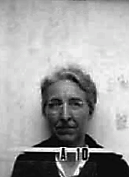Elda Anderson (1899-1961) was an American physicist.
After spending her entire life and career in the state of Wisconsin, Anderson was uprooted by the Manhattan Project in 1941. After briefly conducting research for the project at Princeton University, she was soon after called west to the Los Alamos project site, where her diligence and intellect would make her a key figure in the atomic bomb’s creation.
Often seen working late at night, and boldly dressed in jeans and flannel shirts, Anderson was the scientist responsible for the creation of the laboratory’s first sample of uranium-235. In addition, she was put in charge of her Los Alamos dormitory, given that she was so much older than many of the other women working on the Manhattan Project at the time.
After the war, Anderson worked at the Oak Ridge National Laboratory, where she established the Health Physics Division.





